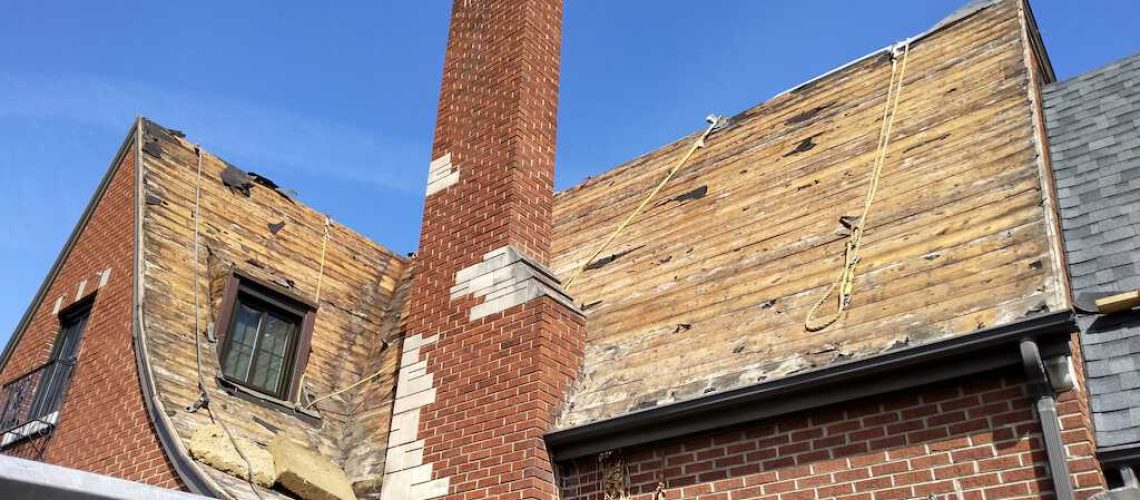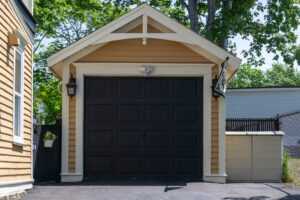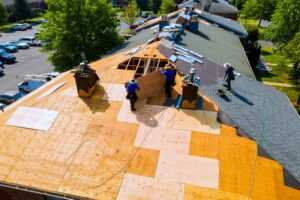Roof repair can be a costly endeavor that many homeowners face. Depending on the damage, you could pay between $300 and $15,000 for repairs or a replacement!
It is crucial to take measures as soon as roof damage is suspected to prevent additional or more costly repairs. If roof damage goes unaddressed, it can become severe enough to require roof replacement, costing thousands of dollars.
Identifying roof damage early on is one of the most effective ways to prevent costly repairs or replacements down the road. Keep an eye out for the following signs of roof damage in the following roof checklist.
Missing Roof Shingles
Missing roof shingles are one of the first signs of roof damage. Look for gaps or large amounts of missing roof material, especially near chimneys, vents, and other roof penetrations.
Curling Roof Shingles
Asphalt shingles contain a tremendous amount of flexibility when first installed. But as time passes, they can become brittle as the petroleum oils within the asphalt evaporate from UV rays and weather. This makes it hard for them to adapt to climate changes without shifting or curling.
If you see any buckled or cupped shingles on your roof, it should be a clear sign that it’s time for routine maintenance or possible replacement of those areas.
Curled shingles can also result from inadequate fastening, improper ventilation/air circulation in your attic/roof space, or even leftover debris from past storms- all worth checking out!
While these unattractive roof defects may initially appear harmless, they often point toward deeper problems, such as:
- Worn flashing seals (leading to leaks)
- Damaged felts underneath the layer of mats
- Deck rot due to trapped moisture
The importance of getting this addressed promptly cannot be understated. All these will culminate in costly repairs if you don’t address them when you find them.
Cracked Roof Shingles
Crackled shingles are the most prominent symptom of deterioration in a roof.
Shingles undergo two types of damage when exposed to elements such as sunlight, wind, and rain: physical and chemical.
Due to expanding and contracting temperatures, physical damage includes cracking, splitting, or loosening. At the same time, chemical degradation is typically caused by UV radiation responding to materials found within the shingles.
In both cases, the end result is cracked or broken shingles that no longer provide adequate protection from water (as well as other sources of harm).
Granules in the Gutter
If you notice granules in the gutter, it is likely a sign of roof wear. Granules are tiny pieces of roof material that break off from roof shingles as roof wear occurs.
Moss Growing on the Roof
When moss grows on your roof, several problems can arise. Moss acts as an insulator, keeping moisture beneath your roof’s shingles long after rainfall has stopped.
This can lead to water damage over time because the damp environment encourages organic materials like leaves and twigs that accumulate on roofs to begin decomposing.
It also makes an ideal breeding ground for fungi like mold or mildew. That can even further accelerate the decay of organic matter on the surface of your roof – including damaging the substrate!
Moss prevents rainwater from coursing off into gutters properly due to its thick texture, creating slow-flowing channels (attractive spots for other small pests).
The increased weight from the accumulation of debris trapped underneath the moss means there’s a potential for rotting timbers under the eaves. It can cause weakened structural integrity if left unchecked!
Leaky Roof/Stains on Interior Ceilings or Walls
Stains on the walls can indicate roof damage and should not be ignored. These stains are often caused by water leaking through the roof, which could cause further and more costly damage to your home.
When roofs deteriorate, they often form cracks or gaps that allow rainwater or snow to seep in. Over time, this moisture will cause a stain on the wall below it as the damp’s natural reaction is to run down gravity.
Depending on where these marks appear in your home – near windowsills or along outside walls – could also provide hints about where the source of the leak is coming from near those areas.
Structural Roof Damage (Sagging Roof)
A sagging roof indicates a structural issue with your roof’s support. Whether caused by water damage, improper installation, or lack of maintenance, a sagging roof can indicate severe problems underneath the shingles.
If your roof is sagging from its original point or sloped shape, it could indicate that the rafters or supports beneath it needs to be replaced or strengthened.
Other evidence of water damage includes:
- Drooping ceilings after a rain
- Crumbling drywall
- Wooden beams decaying
Loose shingles are another sign that can accompany a sagging roof. Keep an eye out for errant pieces around the eaves, which could lead to more severe damage if left unchecked.
Repair costs will depend on how much damage has occurred over time. It would be best if you took action before further delays can increase those repair bills exponentially.
How Often Should You Inspect Your Roof?
A good rule of thumb is to perform a roof inspection at least twice per year for any signs of wear and tear.
You’ll be able to detect minor problems before they become major ones. And you can also mitigate potential hazards related to falling debris from roofs/gutters, which could lead to serious accidents if left unaddressed.
Find the Best Roofers in Champaign, IL
If you notice any of the above signs, taking action as soon as possible is essential.
Some roof repairs can be conducted with a DIY roof repair approach. But it is always best to consult a roof inspector or roofing contractor for the best and most accurate assessment of the situation.
Freeman Exteriors offers roof repair and replacement services in the Champaign, IL, area. Our roofers have years of experience and provide quality roofing services at an affordable price. Contact us today for a free estimate on any roof damage you may have.




